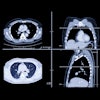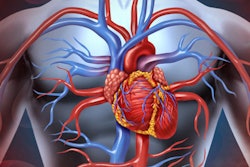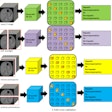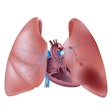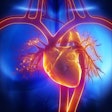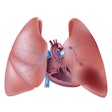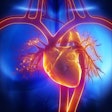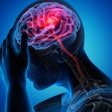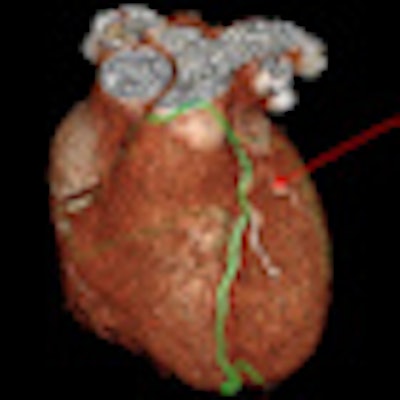
An analysis of more than 10,000 patients with nonobstructive coronary artery plaque has found that statin use can reduce mortality by as much as half in patients at high risk at coronary CT angiography (CCTA) and using traditional risk measures.
In addition, all-cause mortality was significantly higher in patients with nonobstructive plaque (< 50% luminal stenosis) than in those with normal coronary arteries, investigators reported at the American Heart Association (AHA) 2011 Scientific Sessions. The use of statins had no effect on medium-term mortality in patients identified at low risk, according to the study presented by Dr. Gary Small from the University of Ottawa.
And while statins cut the mortality risk in half in high-risk patients, aspirin provided no benefit in any patient group. Imaging results had an important effect on prognosis in the first-ever study to consider it, investigators said.
"It turns out that statins benefit patients with intermediate or high [National Cholesterol Education Program (NCEP) Adult Treatment Panel (ATP) III] risk of coronary artery disease, but only if you also had plaque by coronary CT angiography," said lead investigator Dr. James Min in an interview with AuntMinnie.com. "In contrast, statins didn't benefit patients considered low NCEP ATP III risk -- irrespective of whether they had plaque or not."
"It suggests that we can identify and treat people who are at intermediate or high NCEP ATP III risk who really would benefit substantially from statins, and discriminate between those who would and those who would not, at least in this intermediate term follow-up of two and a half to three years," he said.
Many studies have examined the prognostic implications of obstructive coronary artery disease in patients undergoing coronary CTA, but the role of nonobstructive disease in disease risk is unclear, Min said, as is the utility of treating individuals with nonobstructive disease.
Current practice relies on clinical or laboratory markers of disease, including diabetes, high cholesterol, or other components of high Framingham or NCEP ATP III cardiovascular risk scores, to determine whether aspirin or statins should be prescribed to reduce the risk of future events, though the utility of treatment prescribed based on such markers is unclear.
Whether or not an imaging test such as coronary CT angiography can be used to identify at-risk patients with nonobstructive disease who can benefit from treatment has not been investigated.
The analysis had several aims, including determining prognosis in patients with nonobstructive coronary artery disease (CAD); examining the effects of baseline use of statins or aspirin on nonobstructive coronary artery disease, compared with patients with normal arteries; and, finally, examining the effects of statin and aspirin on all-cause mortality.
The original Coronary CT Angiography Evaluation for Clinical Outcomes (CONFIRM) study published last year included 27,125 consecutive patients who underwent coronary CTA at 12 centers in six countries.
This analysis of the CONFIRM results included patients without obstructive CAD (≥ 50% diameter stenosis) and without a history of prior CAD for whom baseline information on statin and aspirin use was available. The cohort included 10,418 patients (mean age, 57.2 ± 11.8 years; 52.7% male), including 5,712 patients with normal results at CCTA and 4,706 with nonobstructive coronary artery disease. They were followed for a median 27.2 months (interquartile range: 17.7-40.8), the authors wrote in an accompanying abstract.
Excluded were patients with prior myocardial infarction, prior revascularization, stenosing coronary artery lesions (70% or greater), and a history of transplant or congenital heart disease.
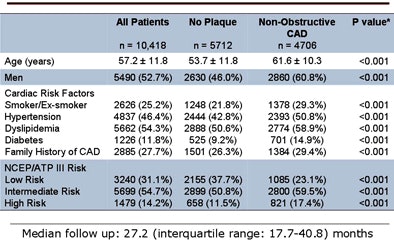 |
| Demographics of patient cohort. All images courtesy of Dr. Gary Small and Dr. James Min. |
Min and colleagues examined segment-based stenosis severity, classifying each segment as normal (no plaque) or nonobstructive (plaque causing 1% to 49% stenosis in the segment). They assessed the prognostic value of nonobstructive coronary disease by CCTA and statin and aspirin therapy in both univariable and multivariable association with all-cause mortality.
 |
| Univariable analysis showed that age, cardiac risk factors, and NCEP ATP III risk category were associated with all-cause mortality. Baseline statin therapy was associated with lower mortality in the entire study cohort and those with nonobstructive CAD, but not in the subgroup of patients without CAD. The use of aspirin at baseline scans was not associated with survival differences in any patient group. |
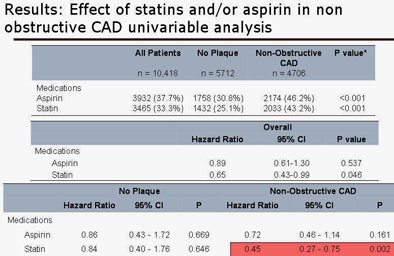 |
Multivariable analysis showed that the presence of nonobstructive CAD was associated with a higher risk of death (hazard ratio [HR] = 2.30, 95% confidence interval [CI]: 1.56-3.39, p < 0.001). Patients with nonobstructive CAD experienced a 6% (95% CI: 1%-12%) higher risk of mortality for each additional segment with nonobstructive CAD (p = 0.021) -- importantly, there was no threshold at which the presence of nonobstructive disease did not raise mortality risk, Min said.
 |
| Above, multivariable per-segment analysis; below, multivariable analysis for statins and NCEP risk. In multivariable analyses, baseline statin use was associated with reduced mortality, benefiting individuals with nonobstructive coronary artery disease, not those with normal coronary arteries. When stratified by NCEP ATP III pretest risk categories, no mortality benefit was seen for baseline statin use in those with normal arteries, regardless of NCEP ATP III risk. |
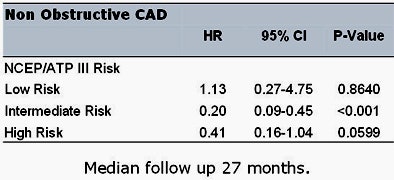 |
The multivariable analysis also demonstrated that statin use at the baseline CCTA exam was associated with a reduced risk of mortality (HR = 0.44, 95% CI: 0.28-0.68, p = 0.0003), a benefit that was present for individuals with nonobstructive CAD (HR = 0.32, 95% CI: 0.19-0.55, p < 0.001) but not for those with normal coronary arteries (HR = 0.66, 95% CI: 0.30-1.43, p = 0.287).
In fact, when stratified by NCEP ATP III pretest risk categories, no mortality benefit was observed in relationship to baseline statin use for participants without coronary artery disease, whatever their NCEP ATP III risk. Baseline aspirin use wasn't associated with any drop in mortality risk whether or not the NCEP ATP III risk category suggested cardiac disease.
Currently, there are no uniform recommendations for primary prevention therapies based on imaging findings, but these results suggest that individuals with intermediate or high NCEP ATP III risk and nonobstructive CAD may derive significant benefit from statin therapy, Min said.
The group reached the following conclusions:
- There is an increase in all-cause mortality (1.68% crude mortality rate over 27 months) beyond that seen in individuals with normal coronaries (0.72% crude mortality rate).
- Aspirin is not associated with a reduction in all-cause mortality.
- Statin use at the time of CCTA is associated with lower mortality (0.76% versus 1.31%) and a lower annual death rate (0.33% versus 0.59%, p = 0.032), with a "number needed to treat" of 81 patients.
"The statins benefited those at high NCEP ATP III risk, but only if you had plaque at CT," Min said. Even in these medium-term results, "we saw more than a 50% reduction in death" when patients with plaque were taking statins when they were initially scanned. But statins didn't benefit those considered at low NCEP ATP III risk, irrespective of whether or not they had plaque.
"We couldn't identify a benefit of aspirin in anybody, irrespective of their NCEP ATP III risk or the presence or absence of coronary disease at CT," he said.
As for study limitations, patients treated with statins at baseline might be less likely to discontinue treatment after being diagnosed with nonobstructive CAD. At the same time, patients found free of plaque at CCTA might be more likely to discontinue statin use, which could confound the data. Changes in lipid profiles that come with statin use could also alter the study conclusions. Finally, the use of all-cause mortality as an end point leaves the number of actual cardiovascular deaths unknown, according to the researchers.
The presence and extent of nonobstructive CAD is associated with increased mortality over a 27-month follow-up, Min said. Baseline statin therapy was associated with a significant reduction in mortality for individuals with nonobstructive CAD. Future studies should consider the analysis of targeted therapies in patients with nonobstructive coronary artery disease.
"I think what we're seeing in statins is very real: that there's a marked reduction in mortality in patients who have plaque by CT," Min said. "I think the notable thing about this study is that everybody had nonobstructive anatomic disease -- all less than 50% stenoses. This is a population of people in whom functional stress testing would be expected to be negative. And yet they have higher risk, and that risk can be attenuated by statins, suggesting that perhaps CT may be an effective modality for identifying patients who have subclinical coronary disease but who may benefit from enhanced medical therapy."
It's a good study, too, because treating everybody is a poor approach that "takes the doctoring out of doctoring" and doesn't benefit those without anatomic risk at CT, while creating higher costs and risks in individuals who shouldn't be exposed to them with unnecessary treatment, Min said.
